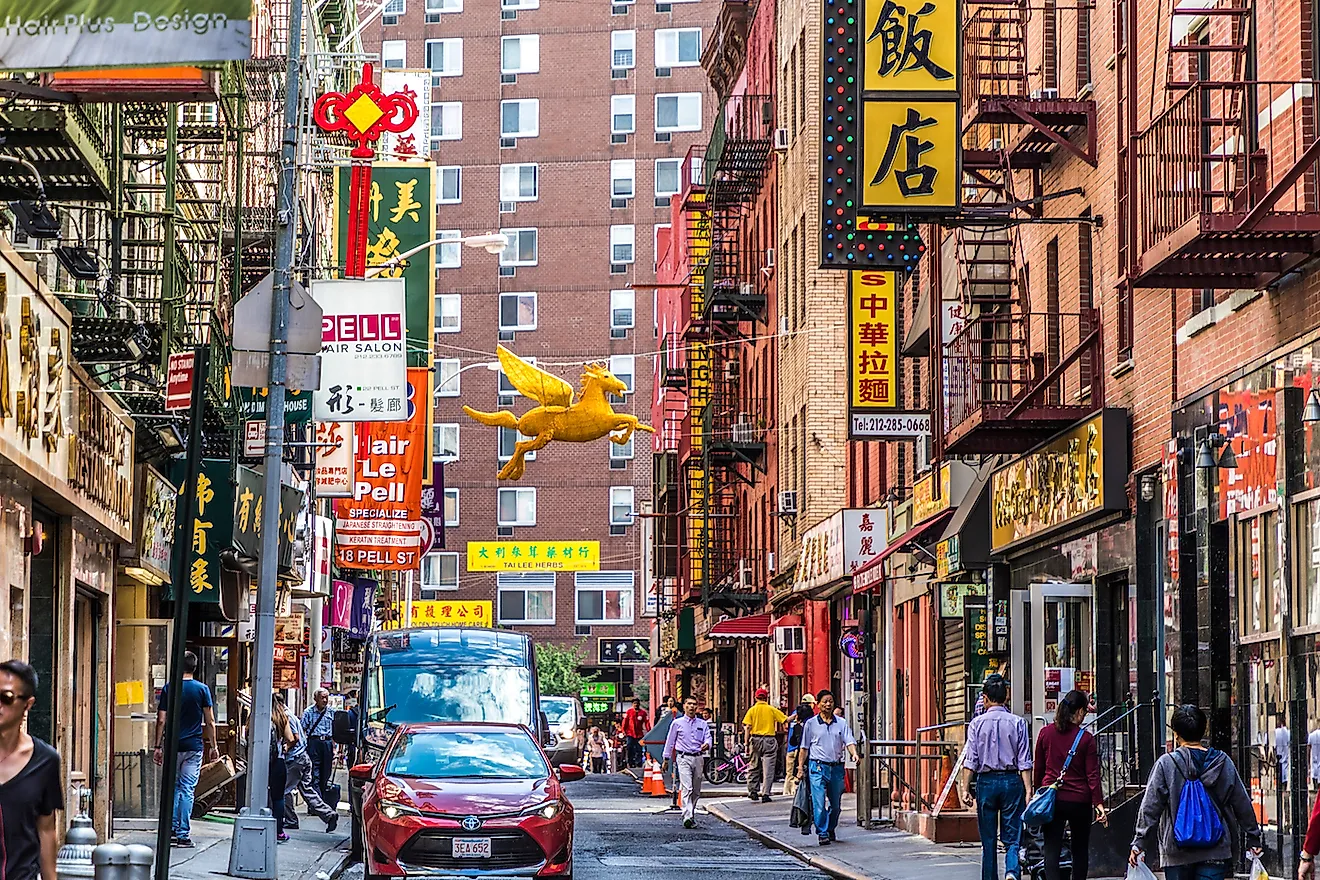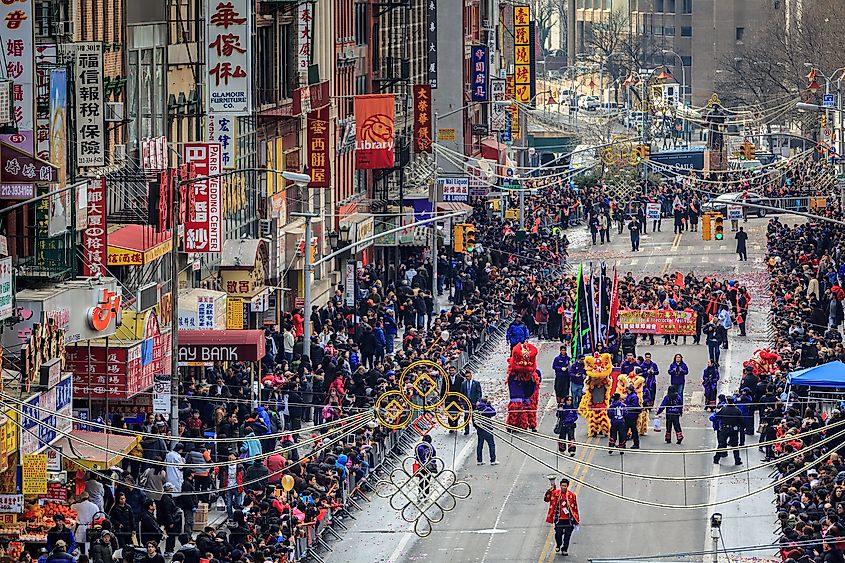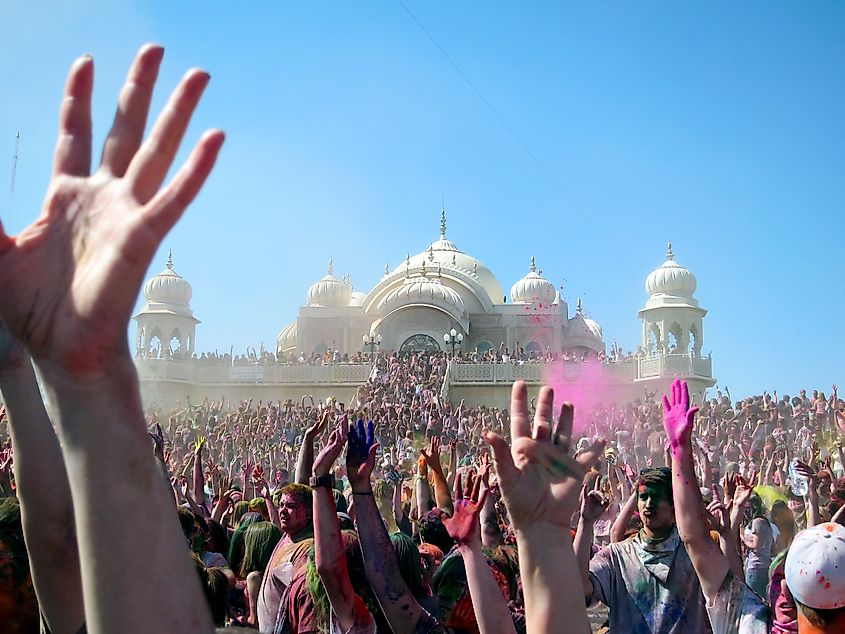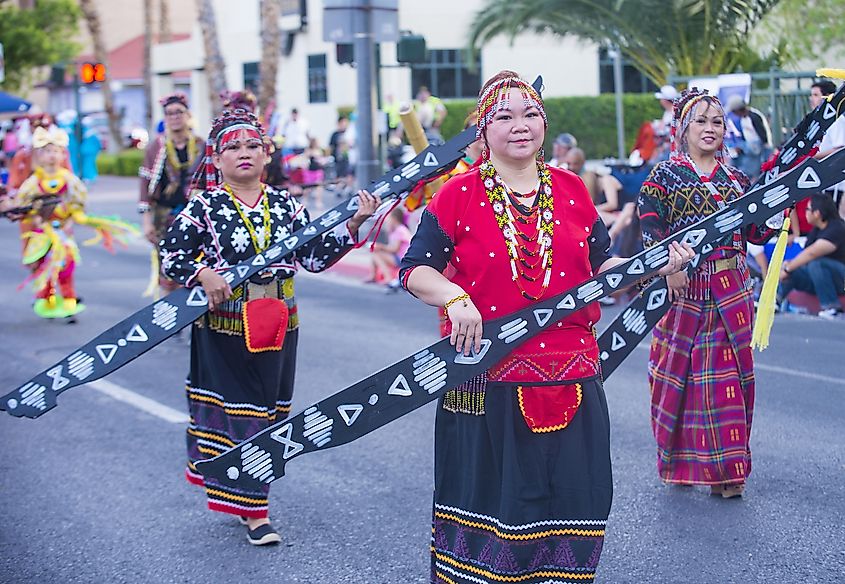The Biggest Asian-origin Communities In The United States

- The US currently has the most number of immigrants compared to any other country in the world. According to the American Immigration Council, there are around 44.7 million immigrants or foreign-born individuals living in America today.
- According to the Pew Research Center, by region of birth, immigrants from South and East Asia combined accounted for 27% of all immigrants.
- The biggest Asian-origin community is composed of Chinese Americans accounting for around 24% (4.9 million) of the total Asian population in the US.
The US currently has the most number of immigrants compared to any other country in the world. According to the American Immigration Council, there are around 44.7 million immigrants or foreign-born individuals living in America today. This comprises around 14% of the country’s total population. “One in seven U.S. residents is an immigrant, while one in eight residents is a native-born U.S. citizen with at least one immigrant parent,” the council adds. Immigrants occupy a significant portion of the US workforce and most of them work in the healthcare and social services industries.
Asian Americans
While the immigrant population in the US is very diverse and all countries in the world are represented among US immigrants, Asian Americans are now the fastest-growing major racial or ethnic group in the United States, according to the Pew Research Center. “By region of birth, immigrants from South and East Asia combined accounted for 27% of all immigrants,” the researchers add. The population of Asian American Immigrants in the US grew 72% between 2000 and 2015. Its population jumped from 11.9 million to 20.4 million. “[This is] the fastest growth rate of any major racial or ethnic group.”
While there isn’t one single Asian-origin group that dominates the Asian population in the US and the numbers are shared by people from different countries in Asia, the biggest percentage of the population are those of Chinese origin accounting for around 24% (4.9 million). They are followed by those of Indian-origins who make up around 20% (4 million) of the total Asian population. While around 3.9% or 39 million are from the Philippines, making up the third-largest community.
If the rate of population growth and influx of new immigrants from the region continues in the next couple of years, Asians will be the largest immigrant group by 2055 according to the Center.
Nearly half or around 45% of all Asian immigrants or those of Asian origins live in the West, with around a third (31%) currently living in California. “Asians make up the largest share of the overall population in California (16%),” the study reveals. The rest of the Asian immigrant population is scattered throughout other parts of the US—23% live in the South, 20% Northeast, and 12% in the Midwest.
History Of Asian Immigration
The first major Asian immigration wave happened after the passing of the Immigration and Naturalization Act of 1965 also known as the Hart-Celler Act which replaced the previous national-origins quota system. The latter that placed a cap on the number of immigrants per origin was replaced by a policy that focused more on reuniting families and attracting skilled workers to the US. This drastically changed the US demographics as immigrants from all over the world, including Asia, came in droves.
But it wasn’t the first time that Asian immigrants have ventured on American soil. In fact, the first Asians who migrated to the US came over a hundred years before the passing of the Hart-Celler Act.
History Of Chinese Immigration

According to information from the Bankcroft Library of the University of California, the first-ever record of individuals coming to the US from China were of three Chinese seamen who landed on US soil aboard the ship Pallas in Baltimore, MD in 1785. More arrived the following decades but it was only after 1848 when the number grew to 4,000. Many came to try their luck during the California gold rush.
A lot more came in 1865 after Central Pacific decided to recruit them to work on America’s first transcontinental railroad. Aside from working as railroad workers, many Chinese immigrants during that time worked as farmhands, gardeners, and laundry workers. Although immigration came to a screeching halt in 1882 when congress passed the Chinese Exclusion Act that banned Chinese immigration to the US.
It was not until the 1940s when the Exclusion Act was lifted after China became America’s ally in the second world war. Their population grew after the 60s and today they make up the largest Asian-origin community in the US.
According to the Migration Policy Institute, many Chinese immigrants today come to America first as an International student. China is the main source of foreign students enrolled in US universities. This is why ”Chinese immigrants [currently] have considerably higher levels of educational attainment, especially in terms of advanced degrees, compared to the overall foreign- and U.S.-born populations,” the institute explains.
History Of Indian Immigration

According to the American Immigration Council’s Immigration Policy Center the first recorded individual of Indian-origins landed on US soil in 1790 and a few more arrived between 1820 and 1889. Many of them worked in the sawmills, on farms, and for railroad companies in the Northwest.
In 1946 the Luce-Cellar bill was signed which allowed entry to 100 Indians per year. The Bill also allowed them to apply for citizenship. Although the major wave came after 1947, when India gained independence from Britain. Between 1948 and 1965, 6,474 East Indians entered the United States. By the 50s Indian immigrants began holding professionals careers throughout the US. “The quota on Indian immigration was eliminated in the 1960s, resulting in exponential growth in the number of Indian immigrants,” the researchers explain.
Today, there are around 4 million Indian Americans who form the second-largest Asian-origin community in the country. In 2016 they became the top recipients of high-skilled H1B temporary visas and the second-largest group of international students in US universities.
History Of Filipino Immigration

According to the Migration Policy Institute (MPI), the first wave of Filipino immigrants arrived in the United States following the U.S. annexation of the Philippines in 1899. “Many Filipinos came to work in agriculture, primarily on fruit and vegetable farms along the West Coast and sugarcane plantations in Hawaii, [others worked in domestics], though there are some who came to the United States to obtain education.”
After the second world war, many American soldiers who were stationed in the Philippines came home with their Filipino wives. Other Filipinos came as military recruits. “Some Filipinos who came to study and obtain professional experience in the health-care field remained in the United States after completing their training,” the Institute adds.
According to research from the Department of Ethnic Studies, at the University of California in San Diego, the passing of new immigration policies in the 60s ushered in a major wave of Filipino immigrants to the US. “The Philippines sent the largest number of professional immigrants to the United States, the majority of whom are Filipino health care practitioners.” Soon the country became the largest supplier of health care professionals to the US, “sending nearly 25 000 nurses between 1966 and 1985 and another 10 000 between 1989 and 1991.” Today, around 3.9 million Filipino Americans are living in the US, the third-largest Asian-origin community in the country.
The Biggest Asian-origin Communities In The United States
| Rank | Asian-origin community | Population estimates for the 19 largest Asian-origin groups in the U.S. (based on self-described race or ethnicity), 2015 |
|---|---|---|
| 1 | Chinese | 4,948,000 |
| 2 | Indian | 3,982,000 |
| 3 | Filipino | 3,899,000 |
| 4 | Vietnamese | 1,980,000 |
| 5 | Korean | 1,822,000 |
| 6 | Japanese | 1,411,000 |
| 7 | Pakistani | 519,000 |
| 8 | Cambodian | 330,000 |
| 9 | Hmong | 299,000 |
| 10 | Thai | 295,000 |
| 11 | Laotian | 271,000 |
| 12 | Bangladeshi | 188,000 |
| 13 | Burmese | 168,000 |
| 14 | Nepalese | 140,000 |
| 15 | Indonesian | 113,000 |
| 16 | Sri Lankan | 60,000 |
| 17 | Malaysian | 30,000 |
| 18 | Bhutanese | 24,000 |
| 19 | Mongolian | 21,000 |











